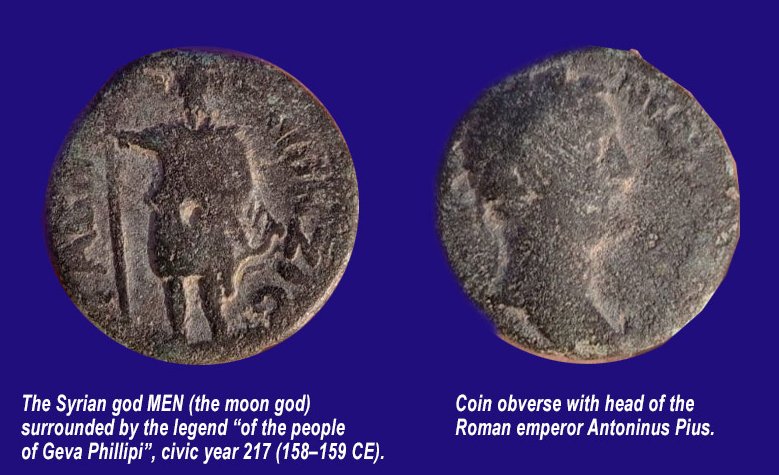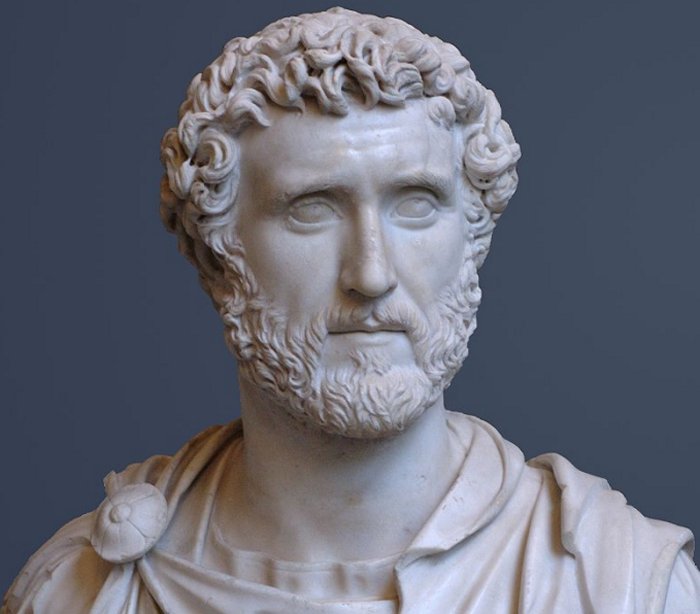Conny Waters – AncientPages.com – A rare 1800-year-old coin depicting the head of the Roman emperor Antonius Pius (86 – 161) was Roman emperor during the time 138 – 161, and one of the Five Good Emperors in the Nerva – Antonine dynasty.
Born into a senatorial family, Antoninus held various offices during the reign of Emperor Hadrian, who adopted him as his son and successor shortly before his death.

1800-year-old coin unearthed in southern Carmel. Image credit: Nir Distelfeld, Israel Antiquities Authority
Very few coins of this kind have been found in Israel, and this well-preserved artifact dates back from 158–159 and was minted in the city of Geva.
“This coin joins only eleven such coins from known locations in the National Treasures Department collection, said Dr. Donald Tzvi Ariel, head of the Israel Antiquities Authority’s Numismatics Department, in a press release.
“All the coins were found in northern Israel, from Megiddo and Zippori to Tiberias and Arbel.”
On its obverse, the coin bears the head of the Roman emperor Antoninus Pius, who ruled in 138–161 CE, and the reverse shows the Syrian god MEN (the moon god) with the legend “of the people of Geva Phillipi”, [civic] year 217 (158–159 CE).
Lecturer in classical archaeology at Bar-Ilan University’s Department of Land of Israel Studies and Archaeology, Dr Avner Ecker, explained that “the coin discovered is one of the municipal coins minted in the city of Geva Philippi, also known as Geva Parashim. In the Roman period, cities (poleis) were granted the right to mint their own coins.
 Bust of Antoninus Pius – one of the Five Good Emperors in the Nerva–Antonine dynasty. Image source
Bust of Antoninus Pius – one of the Five Good Emperors in the Nerva–Antonine dynasty. Image source
The year marked on the coin is the year when the municipal council was evidently established and its citizens were allowed self-government under the Roman Empire. Geva is an ancient settlement, referred to by Josephus as a town located on the foothills at the edge of the Jezreel Valley.
Herod settled his cavalry forces there (hence the name Geva Parashim, ‘City of Horsemen’) and in the Great Revolt, in 66–70 CE, local and Roman forces set out from there to fight Jewish rebels near Bet She‘arim. Some believe that Geva is located near Sha‘ar Ha-‘Amakim, but most scholars identify the site as Tel Abu Shusha, near Kibbutz Mishmar Ha-‘Emek. Excavations conducted by Bar Ilan University on the tell last summer unearthed remains of fortifications and buildings dating from the Hellenistic to the Byzantine period.”
According to Nir Distelfeld, inspector for the Antiquities Authority Northern District’s robbery prevention unit, the coin was probably lost by its owner on one of the roads that cross this area, until the soldier Ido Gardi spotted it almost 2,000 years later, during his training exercise.
This is an opportunity to call on any members of the public who have found coins, or any other ancient artifacts, to report them to the Israel Antiquities Authority. We will come and transfer the find to the National Treasures Department, hopefully adding more data and enriching scholarly research with another piece of evidence from the past. It should be stressed that antiquities are national, Distelfeld added.
Written by Conny Waters – AncientPages.com Staff Writer





